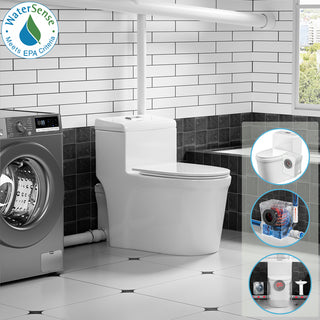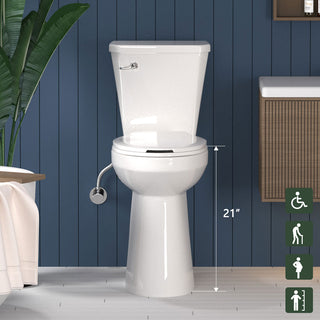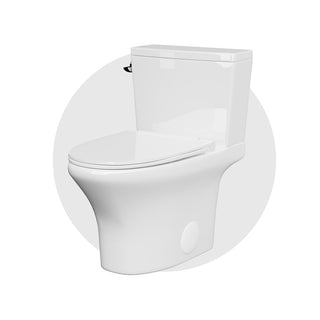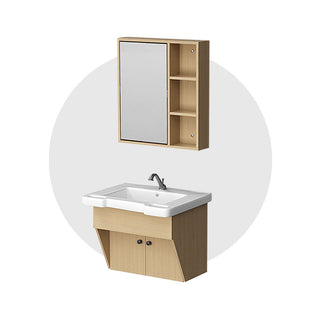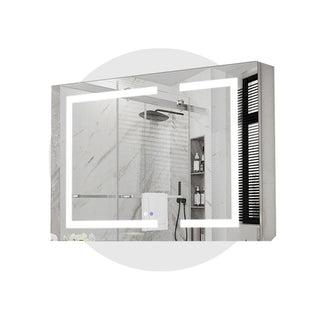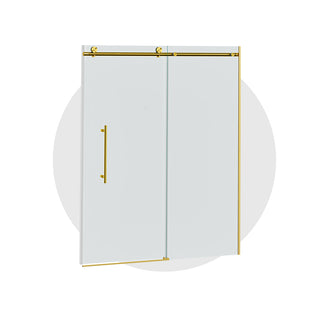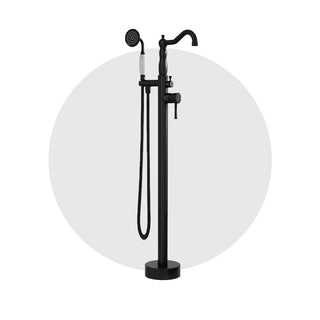When it comes to choosing a toilet, one thing you definitely don't want to skimp on is the flush. After all, what’s the point of a fancy toilet if it can’t get the job done? From single flush to dual flush, power flush to water-saving models, there are tons of options out there. So, which one’s right for you? Let’s break down the different types of flush systems and help you figure out which one’s the best fit for your needs.
1. Direct Flush vs. Siphonic Flush
Whether it’s a standard toilet or a smart one, toilets are generally divided into two main types based on their flushing mechanism: direct flush and siphonic flush. But which one actually works better in real life? To make the right choice, it’s important to understand the difference between the two so you can pick the one that best suits your needs.

Direct Flush: This type of toilet uses the force of the water flow to flush directly. With short, wide pipes, it creates strong flushing power, making it less prone to clogs, and toilet paper is quickly swept away. However, because the pipes are short and wide, the water level is lower, meaning the odor control isn’t as effective as with siphon toilets, and the flushing noise tends to be louder.
Siphon Flush: This toilet uses a combination of air pressure and water pressure to flush. The pipes are longer and narrower, so the flushing power is relatively weaker, making it more prone to clogs. On the plus side, it has a higher water level, which provides better odor control, and the flushing sound is quieter.

The siphon toilet has a longer, narrower internal pipe, which provides better odor control and results in much lower flushing noise. However, compared to direct flush toilets, siphon toilets can sometimes struggle to clean thoroughly, and they can easily get clogged if there’s any foreign object in the bowl.

Direct flush toilets use water flow to directly flush the toilet, with a larger single flush volume and more noise. However, the main benefit is that you don't need to keep a trash bin in the bathroom since toilet paper can be flushed away directly.
Secondly, siphonic toilets come in two types: jet siphon and vortex siphon.

Siphonic toilets are further divided into vortex siphon, super vortex siphon, and jet siphon. As shown in the image above, the vortex siphon features a water outlet on one side of the toilet that sprays water to create a vortex-like flow, making it more effective at cleaning.

The most common siphonic toilet is the jet siphon, which comes in two jetting styles. One has an outlet at the bottom of the toilet to thoroughly flush the base. The other features spray outlets around the top rim, forming a circular spray that cleans the toilet walls thoroughly during flushing.

As shown in the image above, the counterflow super vortex siphon toilet is actually similar to the vortex siphon, but with two opposite water outlets that create a counter-flow flushing mechanism. It's currently the latest design in siphonic toilets, providing a more thorough and cleaner flush.
At the end of the day, choosing the right flush system comes down to your preferences and needs. Whether you're after power, efficiency, or water savings, there's a flush that’s perfect for you. So, next time you’re shopping for a toilet, don’t just think about looks—make sure it’s got the flush that works for you. After all, the most important thing is a toilet that gets the job done, every time.



